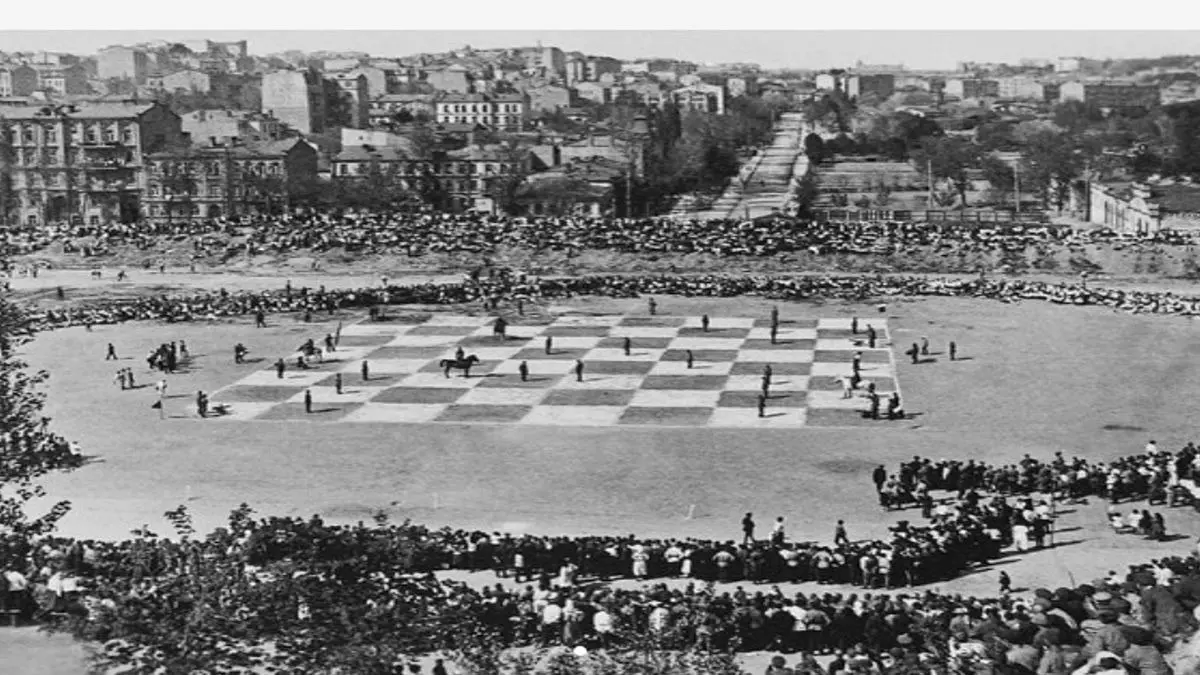Updated 30 May 2025 at 14:42 IST
5 Hours, 67 Moves, and 8,000 Spectators: All You Need To Know About The Giant Human Chess Match That Was Played in 1924 Russia
Did you know both the chess masters - Romanovsky and Rabinovich - called in their moves by telephone to coordinators on site, and the latter used megaphones to command the human chess pieces.
- World News
- 2 min read

A century ago in Russian port city Leningrad, chess went live on ground, yes, literally. On July 20, 1924, Palace Square in Leningrad (now St. Petersburg) decked up as the grandest chessboard the world had ever seen. Soviet chess masters Peter Romanovsky and Ilya Rabinovich faced off in a real-life human chess game that reportedly drew a crowd of over 8,000 spectators.
In this once-in-a-lifetime event, soldiers of the Soviet Red Army and sailors from the Red Fleet became chess game pieces, physically moving across a massive checkered field. Even horses were involved, representing knights in a game that brought the game of chess off the board and into a live-action drama.

How Was the Game Played On Ground?
Both the chess masters - Romanovsky and Rabinovich - weren’t standing on the square. Instead, they called in their moves by telephone to coordinators on site. Those coordinators then used megaphones to command the human chess pieces to move in formation, step by step.

67 Moves, 5 Hours, But No Winner
The crowd watched with ceaseless attention as the pieces made their ways slowly but methodically through 67 moves over the course of five hours. The game, however, ultimately ended in a draw.
Advertisement

Why Was Human Chess Game Played?
This dramatic exhibition was part of a broader Soviet initiative to elevate chess as a symbol of discipline and intellectual strength. It was the fourth such event in an annual series designed to promote chess culture across the Union of Soviet Socialist Republics (USSR). The same format games had been held in Smolensk (1921), Kerch (1922), and Omsk (1923) before this, with Leningrad hosting the most ambitious one thus far.
Rare archival footage of the event still exists on social media, capturing the moment when chess left its indoor game identity and moved out of the hall rooms under the Sun.
Advertisement
Published By : Moumita Mukherjee
Published On: 30 May 2025 at 14:42 IST
